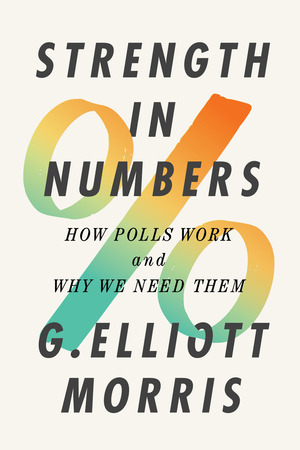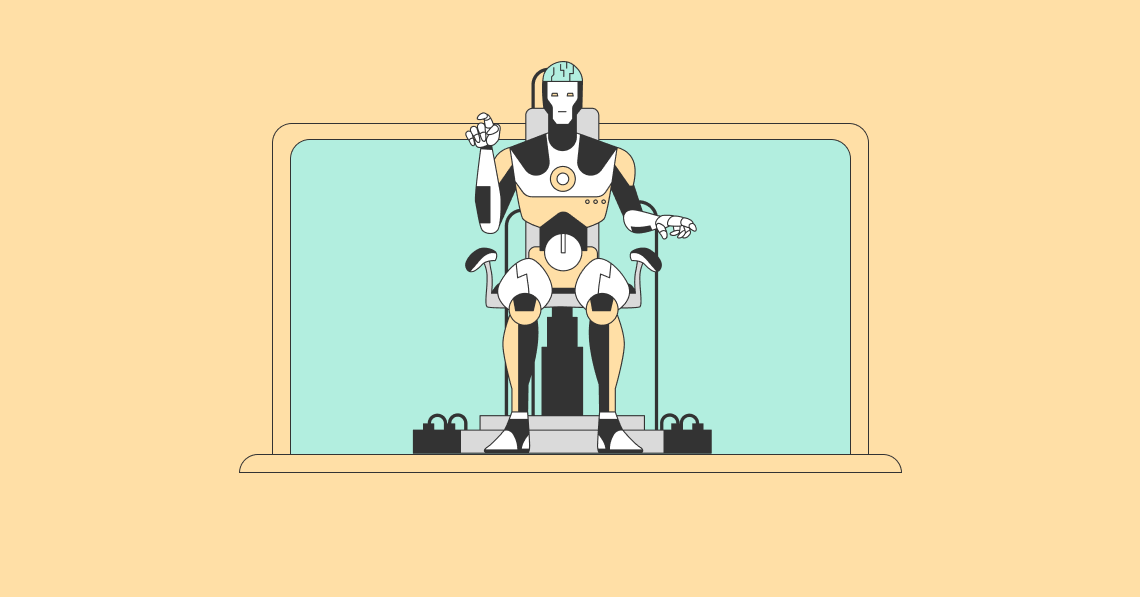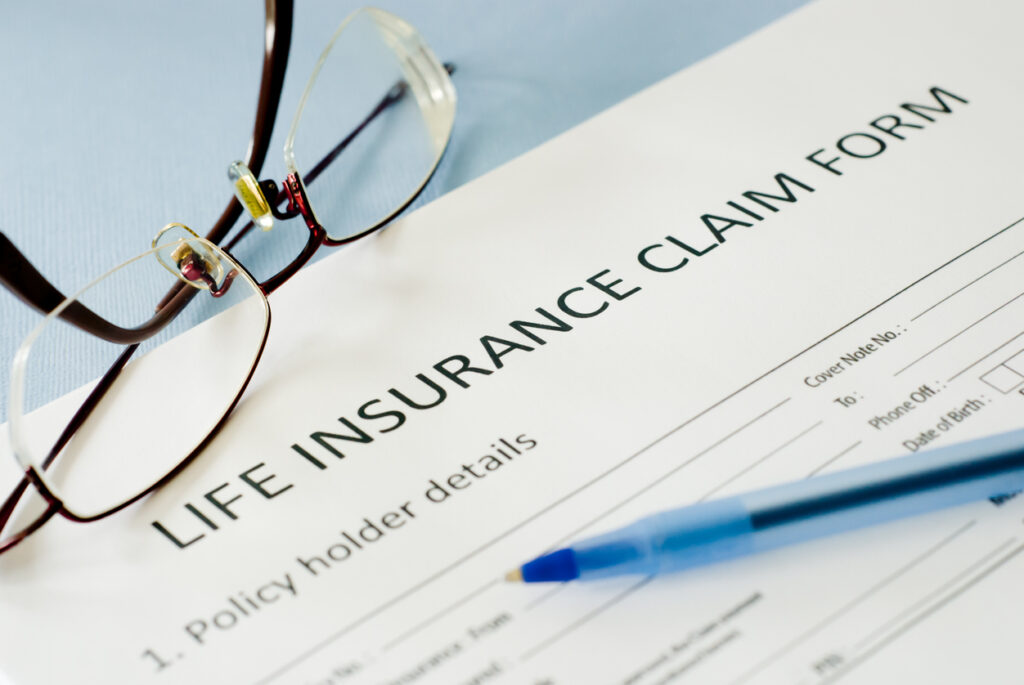| Expensive Viewers: We’re delighted to element an excerpt from G. Elliott Morris’s new e-book, Toughness in Figures: How Polls Work and Why We Have to have Them. Morris is a details journalist at the Economist whose function has earlier appeared in the Crystal Ball. In this excerpt, Morris addresses some of the significant inquiries of polling — specifically, how polling can be improved, and how the public’s comprehending of polling can be enhanced alongside with it.
— The Editors |
The polls have experienced some major misfires, but they are nonetheless the very best tools we have to gauge aid for the steps of the authorities. If the accuracy of polling all round is measured by the predictive capabilities of election polls, then they are commonly off by a person proportion issue right here and two there, and the human being in the guide ends up profitable. Research of problem polls directly suggest they may be a lot more correct than their pre-election counterparts.
A lot more importantly, a just one- or two-issue overlook is not nearly massive ample to alter conversations about community policy. What is the sensible variance concerning a position that is supported by 60% as opposed to 62% of grownups? Absolutely the two-issue distinction would not adjust any politician’s brain when so distinct a the vast majority has now made the decision in favor. And how much does the variance involving even 48% and 50% subject? The latter is closer to a majority, but with both of those figures inside the margin of error of it, number of leaders would be persuaded to do one thing risky just on the again of the solitary poll. On the whole, the photo of the nation as uncovered by polls appears very exact.
This does not necessarily mean that all polls are superior. We have seen how pollsters in Iraq and other abroad (specially Center Eastern) nations around the world in the early 20-very first century struggled with the strategies and business of survey-having — or may perhaps have been affected by authoritarian governments — and made unreliable facts that was possible even falsified. All those conclusions were passed up the chains of command to leaders in the two the United Kingdom and United States — and dispersed to the media. Alongside with so-called drive pollsters, ideologically enthusiastic companies, and attention-seekers, these examples remind us that we can not thoroughly enable down our guard when accumulating info on the will of the folks, as we have witnessed how, across the board, not all polls are produced equivalent.
More than the ninety-year background of polling, we have figured out general public belief surveys are a lot less like pulse oximeters and much more like a cracked mirror — a device that reveals a portrait of the gazer that is around accurate, but with notable imperfections. These cracks became obvious right after polls had been faulted for pretty true methodological shortcomings for the duration of elections in the two the new and distant past — but also by plan and unfair beatings by critics who do not realize both the science powering them or their value to democracy. However the reflective area can sometimes give up a distorted perspective of the American public, we have observed that its imperfections do not render it completely useless. Luckily for us, as opposed to a glass mirror, the polls can be fixed to a substantial degree, cracks filled and blemishes polished out. Pollsters are constantly participating in the system of repair, but citizens as well can enable polling get back its footing and recognize its entire probable. In the end, the fixes will direct us to ask ourselves: Can we use the mirror to boost our democracy?
I suggest 5 reforms that pollsters, political practitioners, the media, and the general public can adopt to elevate the polls. Very first, pollsters ought to abandon polls fielded fully by phone, and integrate samples drawn by other methods. Due to the rise of caller ID and other phone-blocking technologies, as properly as a basic distrust of the pollsters, mobile phone polling has turn into ever more unreliable and exceptionally expensive. Cellular phone pollsters facial area a fatal mixture of superior fees due to the labor calls for of dialing extra mobile cellphone numbers by hand, and a lack of large-high-quality populace benchmarks to which they can modify their samples to guarantee their representativeness, specially by demographic group. There was a time when in excess of 90% of persons you identified as would answer a cellular phone poll now, pollsters are fortunate to get five or six % of people to tell them how they truly feel and what they imagine. And that group is unrepresentative.
When pure phone polls have been trending towards irrelevance, on the net pollsters have been proving their value. By means of experimentation with new details-assortment solutions and improvements in stats, firms these as YouGov and Civiqs have outperformed pure “probability” methods that executed effectively in the previous. Their skill to obtain repeated observations from the individuals above time permits them to produce samples that are generally more politically consultant than a phone poll fielded between a random subset of the population. The corporations making use of Erin Hartman’s approach of changing for predicted nonresponse, like David Shor’s and the New York Occasions, have also formulated potent ways to change their samples to be better agent of the populace. At the very the very least, they do not skip elections by 17 details.
Pollsters also should to invest in additional off-line strategies, these types of as the handle-based approaches that the Pew Analysis Middle developed throughout the 2020 election. These strategies ought to enable pollsters derive greater-quality inhabitants benchmarks for issues like partisanship, spiritual affiliation, and have faith in in our neighbors — information that can be used to alter other polls and enhance the landscape of public viewpoint study. Benchmarking surveys could also be completed in conjunction with the government, which still manages to get really significant shares of individuals to fill out its census surveys, or as a result of a commercial partnership that distributes the benchmarks to its husband or wife organizations. Even though these solutions may well not take care of the fundamental issue with polls — sure groups of persons refusing to reply their phones or fill out online surveys at premiums conventional modeling has a difficult time capturing — they will go a extended way towards repairing them.
Second, pollsters must be open to the actuality that their viewpoint polls are issue to around 2 times the likely mistake that is captured by the traditional margin of sampling mistake — and political journalists should address personal surveys with extra skepticism. A pre-election poll that exhibits 1 prospect major by two or a few factors need to not be dealt with as a reliable poll for that candidate, or even a indication that they are leading. If there is a two-place unfold and a six- or 7-share-point margin of mistake, you are only a little far better off betting in favor of the leading candidate the bet would not be risk-free — and so journalists should report the contest as a toss-up. At the quite minimum, the press ought to usually report the margin of error of a poll near the major of the story. Smarter journalism would remind readers and listeners of the lots of different elements that could result in the survey to go incorrect.
Appropriately, and 3rd, election forecasters need to revisit their outdated suggestions about the potential of aggregation to remove biases in a mass of data, and their capability to express the chance of those biases to audience. The savants have had two contests in a row exactly where they badly underestimated a person prospect across states. The very first time, Donald Trump received more than enough further votes to earn the Electoral College and get over his inadequate 15-30% probability of victory in the main styles the 2nd time, his vote share in two states was bigger than in 80–90% of simulations forecasters generated. In the potential, it could be wise for forecasters to reframe their commentary as discovering what could occur if the polls go mistaken, fairly than furnishing pinpoint predictions of the election. The anticipations of hyper-precision, largely caused by the media’s misunderstanding of Nate Silver’s profitable forecasts in 2008 and 2012, as well as his championing of correct forecasts in binary conditions, but to which I have contributed as very well, must be consigned to the record publications. Forecasting need to come to be an business for exploring uncertainty, not predicting outcomes.
Fourth, to combat the influence of small-high-quality outfits that are determined by revenue or ideology, the American Association for General public View Investigation (AAPOR) ought to additional aggressively and publicly sanction general public pollsters who do not release complete, clear stories on their methodologies. Moreover, when a study company is suspected of faking its details or participating in other nefarious action, AAPOR ought to look into it and interact in extra significant-profile scrutiny — each to incentivize good actions and to shore up general public believe in in the market. Alternatively of staying a skilled society for the pollsters, AAPOR could renovate by itself into a community watchdog for survey information. If it publicly condemned the practices of ideologically biased or nefarious corporations, thereby affecting news coverage and customer recruitment to produce a reduction of profits for negative actors, AAPOR could cut down on the selection of unsavory stores at home, thoroughly clean up the public feeling details setting, and restore have faith in in the market.
Ultimately, to better obtain the guarantee of polls in a republican authorities, much more political interest groups need to dedicate themselves to measuring and advocating for the public’s opinions. Facts for Development, a progressive feel tank that was started out in 2018, has information-driven advocacy at the core of its mission. Their top secret is a combination of pace, accuracy, and networking. The nerdy progressives who run the group’s polls use a affordable on-line study system called Lucid to area brief surveys with substantial amounts of respondents, normally operating numerous questionnaires at the same time. Then, the methodologists pounds their data to be equally politically and demographically representative — as for every the breakdowns of the voter file — and an army of authors compose rapid experiences and publish them on the net. Even though a traditional media poll will acquire months to structure, area, excess weight, and report, Details for Progress can question the issues it demands and publish the results in a matter of days.
The organization product performs. For instance, for months during 2018, politicians and a lot of in the media claimed that a package deal of local weather guidelines called the “Green New Deal” would drag down Democrats in swing districts. But Info for Development produced a report working with polling and MRP modeling showing solid support for the plan in swing districts. The report was tweeted out by the bill’s cosponsors, New York consultant Alexandria Ocasio-Cortez and Massachusetts senator Ed Markey, achieving tens of millions of people today, and was protected thoroughly in the media, such as an exceptional in Vox. In early 2020, the founder of Info for Development, Sean McElwee, landed a conference with Joe Biden’s political group and may well have pushed his advisors to place climate coverage at the forefront of the campaign. The team even certain New York senator Chuck Schumer, the Senate the vast majority leader, to blog site on the firm’s internet site in help of unemployment insurance coverage, which it identified was incredibly popular. “We’ve designed a currency that [politicians] are intrigued in,” McElwee advised the New York Instances in 2021. “We get access to a lot of places of work mainly because everyone desires to discover about the numbers.”
Poll-primarily based general public interest groups do not have to be advocacy-focused. They can spouse with newspapers to share their conclusions and continue to meaningfully boost the political discourse. In the summer of 2021, for illustration, the Republican Celebration engaged in a complete-throated campaign from important race principle (CRT), a human body of legal scholarship about racism and racial inequalities produced in the late twentieth century. Many Republican-led states, which includes Texas and Florida, banned coursework that talked about CRT or similar subjects (such as the New York Instances’s 1619 Task, a sequence of article content that examines the country’s historical past from the date when enslaved people 1st arrived on American soil). But a poll executed by YouGov and revealed in partnership with the Economist found that only 26% of Us citizens experienced even read “a lot” about CRT, and less experienced a apparent strategy of what it was. What misconceptions about their combination attitudes and priorities would the American people have held if those people polls were not posted?
Fielding well timed and pertinent polls can place legislators towards the factors the people today essentially treatment about. If they don’t deal with important concerns, or enact insurance policies that a greater part doesn’t like, the people today can use the info to maintain their leaders to account. In our fourth stage of democracy, the push, advocacy teams, and constituents would all operate jointly to aid the link in between the government and the ruled — by applying the polls.
Jointly, these ways would enable repair the procedures, appropriate the misconceptions, and elevate the impacts of general public impression polling in America. But do not mistake these prescriptions for polls as guarantees of democracy. A increased pedestal for the polls will not deal with the a lot of other forces functioning against agent govt. I do not assure that polls are a panacea. Even now, if we are intrigued in living beneath a really representative governing administration, far more and better polling at least pushes us in the appropriate path.
We, the persons, keep the final key to unlocking polling’s future. When the pre-election pollsters do make their up coming misstep, when some inevitably drop on the incorrect aspect of 50-50 for the duration of the future election, we really should not toss the newborn out with the bathwater. We need to recall that political polling is more like a climate prediction than a health care instrument that the margin of error, at minimum two times as significant as the 1 pollsters and journalists report, does not assign binary results to elections but rather detects the possible distribution of viewpoints among the population. We really should don’t forget that aggregation and modeling do not eliminate the chance for all polls to be biased in the similar way. We will have to internalize the vision of polls as indicating a variety of probable outcomes for an election, ballot initiative, or constitutional referendum, alternatively than a hyper-precise position-prediction. Polls were not invented to make this sort of a issue — and thanks to the statistical legal guidelines of study sampling and the complexities of psychology and human actions, they under no circumstances will.
Excerpted from Energy in Quantities: How Polls Perform and Why We Will need Them, which is now offered for order. Copyright (c) 2022 by G. Elliott Morris. Utilised with authorization of the publisher, W. W. Norton & Corporation, Inc. All rights reserved.
| G. Elliott Morris is a data journalist and US correspondent for the Economist, wherever he writes on a range of matters including American politics, elections, and general public belief. |





